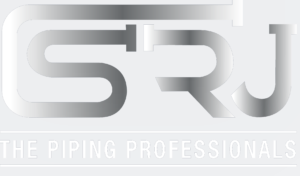Preventing Steam Piping Failures: A Comprehensive Guide
Learn how to ensure safety and compliance in industrial steam systems with proper design, material selection, and maintenance practices
Table of Contents
Key Takeaways
- Steam piping failures cause an estimated ₹2.8 billion in damages annually in Indian industries
- Proper material selection can reduce failure rates by up to 60%
- Predictive maintenance technologies can detect 85% of potential failures before they occur
- ASME B31.1 compliance reduces accident likelihood by 90% compared to non-compliant systems
- Comprehensive operator training programs decrease human error-related incidents by 75%
The Alarming Reality of Steam Piping Failures
Industrial steam systems operate under extreme conditions, with temperatures exceeding 500°F (260°C) and pressures often surpassing 150 psi (10 bar). When failures occur, the results can be catastrophic:
- Explosive energy release: 1 cubic meter of steam at 100 psi contains equivalent energy to 1kg of TNT
- Thermal hazards: Steam at 150 psi can cause third-degree burns in less than 1 second of exposure
- Economic impact: The average cost of a major steam system failure exceeds ₹50 lakh in direct damages
According to National Board of Boiler and Pressure Vessel Inspectors, improper maintenance accounts for 43% of steam system failures, while material defects contribute to 28% of incidents.
Proper System Design Fundamentals

Optimal steam piping layout principles
Critical Design Considerations
A well-designed steam system incorporates these essential elements:
- Proper pipe sizing: Undersized pipes increase velocity and erosion, while oversized pipes lead to condensate accumulation
- Strategic support placement: Supports must account for thermal expansion (typically 1.2mm per meter per 100°C temperature rise)
- Effective drainage: Slope pipes at least 1:100 toward drainage points to prevent water hammer
- Expansion loops: Essential for systems with temperature variations exceeding 50°C
Our steam system design services follow ASME B31.1 Power Piping Code requirements, ensuring compliance with international best practices.
Common Design Flaws to Avoid
| Flaw | Potential Consequence | Solution |
|---|---|---|
| Inadequate anchor points | Pipe sagging, joint failure | Proper stress analysis |
| Improper trap placement | Condensate accumulation | Every 30-50m with drip legs |
| Sharp elbows | Erosion-corrosion | Long-radius elbows (R=1.5D) |
Material Selection for Steam Service
Material selection depends on operating parameters:
| Temperature Range | Pressure Range | Recommended Material | ASTM Standard |
|---|---|---|---|
| Up to 150°C | Up to 15 bar | Carbon Steel A106 Gr.B | ASTM A106 |
| 150-400°C | 15-40 bar | Alloy Steel P11/P22 | ASTM A335 |
| 400-600°C | 40-100 bar | Stainless Steel 304/316 | ASTM A312 |
Material Failure Mechanisms
- Graphitization: Occurs in carbon steel above 425°C over extended periods
- Creep: Progressive deformation under stress at high temperatures
- Thermal fatigue: Cracking from repeated thermal cycling
For critical applications, consider our high-temperature piping solutions featuring advanced materials like P91 alloy steel.
Lessons from Real-World Failures

Root cause analysis of actual steam piping failures
Example 1: Chemical Plant Explosion (2019)
Failure: Catastrophic rupture of 12" steam header
Root Cause: Undetected wall thinning from flow-accelerated corrosion (FAC)
Lessons:
- Implemented ultrasonic thickness monitoring program
- Upgraded material to corrosion-resistant alloy at elbows
- Redesigned flow path to reduce turbulence
Read more case studies in our failure analysis reports.
Preventive Maintenance Checklist
Monthly Inspection Items
- Visual examination for leaks, corrosion, insulation damage
- Steam trap functionality tests
- Support integrity checks
- Expansion joint condition
Annual Maintenance Requirements
- Ultrasonic thickness testing at critical locations
- Full system pressure test (1.5x operating pressure)
- Safety valve calibration
- Thermal imaging survey
Expert Q&A: Steam System Safety
With proper maintenance, carbon steel steam piping typically lasts 15-25 years. However, critical sections (elbows, reducers) may need replacement every 8-12 years due to higher erosion rates.
Water hammer is frequently underestimated. A 2018 ASME study found it accounts for 22% of sudden steam system failures.
Absolutely. Our smart monitoring systems can detect 92% of developing issues before they become critical, reducing unplanned downtime by 65%.
Related Resources
Our certified piping engineers can conduct a comprehensive evaluation of your steam system and identify potential risks before they become failures.
Request Free Consultation Call Now: +91-80416-63637